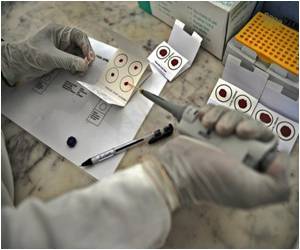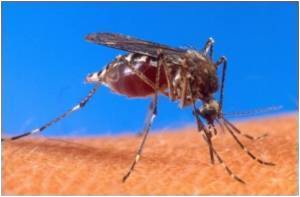
Malaria is a life-threatening disease that strikes more than 200 million people every year - mainly in Africa, Asia and Latin America. The disease is caused by the Plasmodium parasite, which is spread by infected mosquito bites. Today, malaria can be prevented and successfully treated, but more than half a million people nevertheless die every year from the disease.
Large-scale monitoring and treatment programmes during the past decade have reduced the distribution of the disease, and the frequency of actual epidemics has fallen. However, the number of malaria patients with relatively low infection counts has increased, and the need for more sensitive methods to diagnose the disease has thus increased dramatically.
To meet this need, researchers at Aarhus University have developed a new method that can diagnose malaria infections with very high sensitivity. The method is based on measuring the activity of an enzyme called topoisomerase I from the Plasmodium parasite.
The researchers have developed a technology called REEAD (Rolling Circle-Enhanced Enzyme Activity Detection) - which makes it possible to diagnose malaria from a single drop of blood or saliva. This method is much more time-effective and cost-effective than current diagnostic methods, and can be performed by personnel who have no specialised training. It can therefore be used in low-resource areas without the use of expensive equipment, clean water or electricity.
The ongoing fight against malaria is complicated by increasing problems with resistant Plasmodium parasites. In addition, several Plasmodium species (P. vivax and P. knowlesi) cannot be detected with the usual quick-test methods.
Advertisement
The unique sensitivity, combined with its ability to detect infection in very small samples of blood or saliva, makes the method suitable for large-scale screening projects. This is of great importance in areas where the disease is close to being eradicated, and where it is therefore essential to identify and treat all patients infected with one of the above-mentioned parasites - even those who do not show symptoms of the disease.
Advertisement
In addition to her group, which is affiliated with the Interdisciplinary Nanoscience Centre (iNANO) and the Department of Molecular Biology and Genetics, Aarhus University, researchers from both Denmark (Department of Pathology and Department of Clinical Medicine, Aarhus University Hospital) and abroad (Duke University, University of Rome, University of St Andrews and University of Lyon) contributed to this project.
The research team behind the new method for diagnosing malaria include Charlotte Harmsen, Pia W. Jensen, Magnus Stougaard, Emil L. Kristoffersen, Rikke Frohlich, Eskild Petersen, Amit Roy, Christine J. F. Nielsen, Birgitta R. Knudsen, Rodrigo Labouriau and Megan Yi-Ping Ho.
Source-ANI











